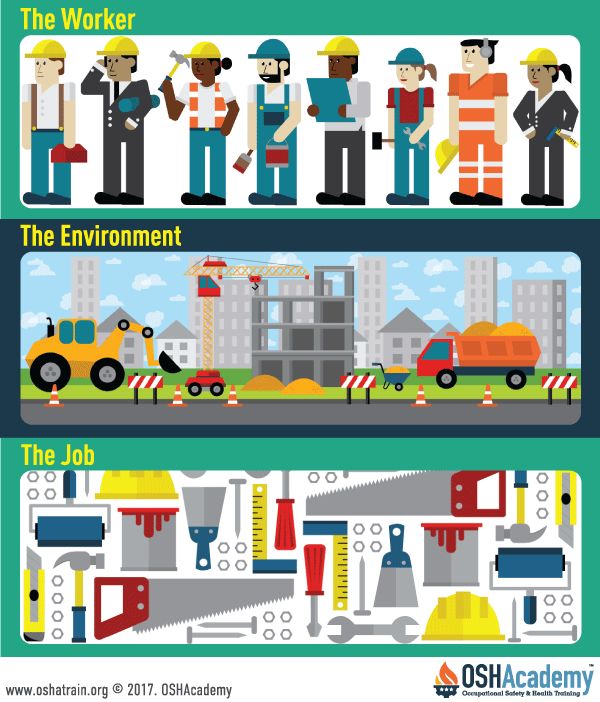Ergonomic Risk Factors
What is Ergonomics?
Ergonomics means finding ways to work easier and just as productive. The goal of the science of ergonomics is to find a best fit between the worker and job conditions. Ergonomics tries to come up with solutions to make sure workers stay safe, comfortable and productive.
Ergonomics also means working smarter, not harder. It looks at the following risk factor categories to see how the job can best fit the worker:
- Risk factors inherent in the worker: Physical, psychological, and non-work-related activities may present unique risk factors.
- Risk factors inherent in the task: Work procedures, equipment, and workstation design may introduce risk factors
- Risk factors inherent in the environment: Physical and psychosocial "climate" may introduce risk factors.
Ergonomic hazards can cause painful and disabling injuries to joints and muscles on a construction site. According to the Occupational Safety and Health Administration (OSHA), ergonomic hazards are the most frequently occurring health hazards in construction and the cause of most injuries.
In a recent survey, 40 percent of construction workers said "working hurt" is a major problem. Working hurt reduces productivity, but continuing to work hurt can result in disabling injuries that end a career. Many laborers retire by age 55 because they just can't do the work anymore. Many can't enjoy their retirement because of their disabilities.
Knowledge Check Choose the best answer for the question.
1-1. Which risk factors are inherent in the worker?
You forgot to answer the question!

